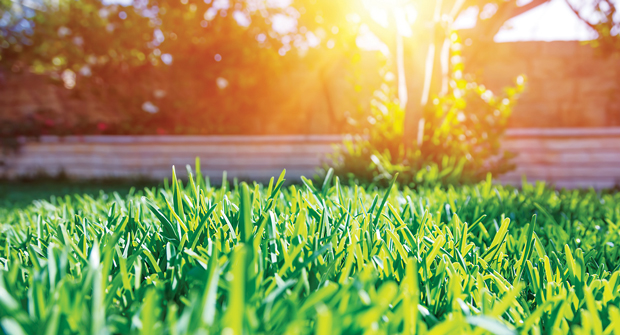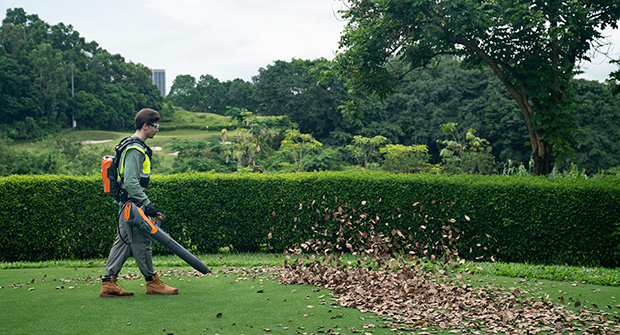Summer is the best time to enjoy a perfect lawn, but July conditions can cause extreme stress for grass. Keeping your customers’ lawns healthy and beautiful can be a challenge in the summer, so here are my top tips to keep your grass at its best.
Know what you’ll face
Drought stress is the most common issue you’ll see in summer, especially in regions of the country prone to hot, dry summers, like Arizona where I live. You should always know whether you’re working with warm- or cool-season grass. Warm-season varieties, like Bermuda, will grow in the summer, but cool-season grasses like Kentucky bluegrass, ryegrass and tall fescue are most active in spring and fall.
Cool-season grasses are more likely to go into dormancy in July and will need more attention to prevent impacts from pests and stress. Preventive measures like humectant applications can assist with consistent soil moisture to prevent summer stress on both cool- and warm-season grasses.
Take stock of your grasses and know what environmental conditions are likely to be like in your area this summer.
Have recovery options
After you’ve made your initial assessment, think about your recovery plan. If you notice grass is dying, determine the cause before acting. If it’s due to drought and heat stress, consider asking your customer about their irrigation cycles to ensure they are watering deeply into the root zone.
Generally speaking, don’t apply fertilizers with high nitrogen in summer. Focus instead on secondary nutrients like calcium and micronutrients like iron and manganese, for enhanced color without extra growth.
Insects may also be the cause of dying grass. Grubs and chinch bugs are just two examples of common summer pests. If you suspect insect damage, test the assumption by putting a tin can (with both ends opened) into a shallow hole in the ground and then flooding the can with water. Any insects in the soil will float to the top.
If stubborn areas of grass won’t recover, you may need to overseed. Make sure to apply enough water to keep the soil and seed moist for germination. Humectants can also help during seeding as well.
Water properly
One way to make sure grass is getting enough water in hot, dry conditions is to water deeply. Instruct your customers to water until 4 to 6 inches of soil is moist, which they can check using a metal rod or screwdriver. Deep watering ensures that the entire root zone is reached and makes the grass less susceptible to the effects of evaporation and heat.
Customers should water early in the morning to reduce water loss from evaporation. This will also help prevent diseases; the longer grass blades are wet, the more opportunities there are for disease to take hold.
End the season strong
As summer comes to a close, be sure to prepare for cooler conditions. Think about what fertilizer or soil amendment will best help the specific type of grass. For cool-season grasses that are more active in fall, aerate the soil to allow for proper growth and to reduce damage caused by compaction.
Alternatively, warm-season grasses are about to go into dormancy, so don’t encourage growth. You may want to overseed with rye, as is common in the West.
Those are my top five tips for maintaining a healthy lawn. Implement these to ensure success this summer — and all year round!


